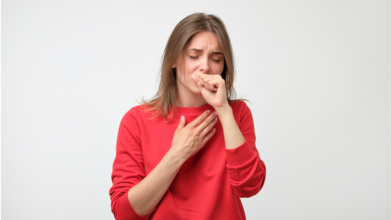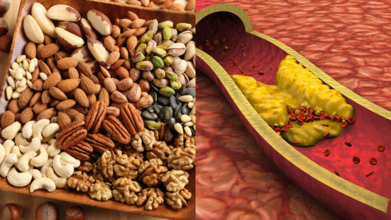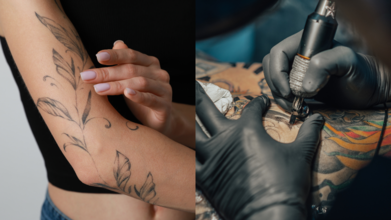- Health Conditions A-Z
- Health & Wellness
- Nutrition
- Fitness
- Health News
- Ayurveda
- Videos
- Medicine A-Z
- Parenting
- Web Stories
Why The Healthiest People Swear By Doing Less, Not More? Expert Explains

Credits: Freepik
We are an era when wellness is a booming industry and biohacking trends are flooding social media timelines. From DNA diet programs to cryotherapy rooms, the promise of improved health tends to be packaged in a glitzy, pricey, and overly complex way. But the healthiest individuals, wellness scientist Ritesh Bawri argues, aren't those following the latest hacks; they're the ones who are honing the fundamentals and making it simple.
In a time of smartwatches, health apps, gut tests, and never-ending supplement regimens, it's easy to think that the secret to living longer and feeling better is doing more—more treatments, more routines, more products but what if it's just the opposite? What if the people enjoying the most vibrant health are not the ones obsessively tracking every step and blood marker, but those focusing on less—and doing it with intention?
Wellness scientist Ritesh Bawri has worked with thousands of individuals worldwide. His conclusion is refreshingly countercultural- health is simpler than we think, and real results come from mastering timeless basics rather than chasing the latest biohacks.
Why Biohacking Might Be A Distraction?
Biohacking has become a cultural phenomenon. Scroll through social media, and you’ll see influencers touting cryotherapy chambers, red light therapy, nootropic stacks, and glucose monitors as if they’re daily necessities.
Bawri understands the appeal. “Human beings are naturally attracted to shiny new objects,” he explains. “This instinct is rooted in our survival, like seeking water that glimmers in the sunlight.” In modern times, that same pull leads us toward the latest gadgets and quick fixes in health but he warns that this search for the next best thing often distracts from what actually matters. “Good health is simple and comes from consistently following what I call the seven pillars of health, or MINDSET,” he says.
The Seven Pillars of Health (MINDSET)
Bawri’s framework for optimal health is built on these seven fundamentals:
Meditation – “A moment to pause and reflect resets your autonomic nervous system, promoting calmness in both mind and body.”
Integration – Aligning habits with long-term wellbeing, ensuring lifestyle changes stick.
Nutrition – Balanced in both quantity and composition, nourishing the body without overcomplication.
Detoxification – Supporting the body’s natural ability to eliminate harmful chemicals and dead cells, rejuvenating itself.
Sleep – Aiming for 7–8 hours for memory formation, repair, and hormonal balance.
Exercise – Strengthening muscles and bones to counter age-related decline.
Tribe – Building and maintaining meaningful social connections, because humans thrive in community.
“They’re not trendy—but they work,” says Bawri. Before chasing expensive and unproven shortcuts, he recommends mastering these fundamentals.
Also Read: Chia Seeds Are A Great Source Of Nutrition, Expert Explains Why Eating Them 'Dry' Could Kill You
Why Minimalism in Health Is All That We Need?
Minimalism isn’t just an interior design style—it’s a powerful health philosophy. In Bawri’s experience, stripping away unnecessary complexity can profoundly impact weight loss, immunity, gut health, and mental well-being.
“When we eliminate the noise—such as ultra-processed foods, chronic stress, and erratic sleep—we allow the body’s natural intelligence to take charge,” he says. This means focusing less on piling on new interventions and more on removing what harms or overwhelms the body.
Bawri has seen individuals reverse chronic inflammation, digestive issues, fatigue, and even anxiety without expensive programs or prescriptions. “True health is not cultivated in a pharmacy; it is built through the quiet choices we make every day,” he adds.
Modern Medicine vs. Minimalist Living
It’s important to be clear, Bawri is not anti-medicine. “Modern medicine is crucial,” he emphasizes. “But we often resort to it too soon.” He believes traditional healthcare’s “more is better” approach—more pills, more procedures—can overshadow the body’s inherent ability to heal when given the right environment.
He’s seen biomarkers, like blood sugar and cholesterol levels, improve dramatically through non-invasive, personalized lifestyle changes. For him, the future of health isn’t about adding more layers of complexity but understanding our biology and working with it.
The Myths Driving Over-Medicalisation
Bawri points to one pervasive myth: that every symptom demands immediate medical intervention. “We’ve been conditioned to believe that any deviation from perfect—whether it’s fatigue, bloating, or stress—must be addressed right away,” he says.
In reality, the body is designed to fluctuate. Energy levels, digestion, and mood naturally rise and fall. “Over-medicalisation begins when we lose faith in that innate intelligence,” he explains.
Another damaging myth is that more equals better—more supplements, more diagnostics, more treatments. Many so-called deficiencies are temporary or rooted in lifestyle habits, not true medical conditions. “Before assuming you’re unwell, ask: Am I dehydrated, underslept, or overstimulated?” says Bawri.
Knowing When to Act and When to Step Back From "Wellness Hacks"
In a wellness market flooded with solutions, it’s easy to buy into fear-driven marketing. Bawri recommends pausing before making health purchases.
His advice is to start with observation: track your rhythms, stress patterns, and nutrition without judgment. Then, use those insights to decide what’s necessary. This isn’t about ignoring problems—it’s about making choices based on data and understanding, rather than impulse or trends.
“Choosing wisely starts with education, self-reflection, and the empowering realisation that often, less really is more—when it’s the right kind of less,” he says.
The Psychology Behind Doing Less
Psychologically, doing less can be harder than doing more. Our culture equates effort with value. A packed workout schedule or a long list of supplements feels like proof that we’re “working on our health.” But in reality, relentless effort without rest can create stress, hormonal imbalances, and burnout.
Minimalist health approaches challenge that mindset. They invite us to trust the process and accept that sometimes, subtraction—not addition—creates space for healing.
Post-pandemic, more people are questioning what health really means. The shift toward home workouts, flexible schedules, and a slower pace revealed that many of our pre-pandemic “musts” were optional—or even harmful.
As healthcare costs rise and wellness trends multiply, Bawri’s philosophy offers a grounded alternative. Instead of chasing endless “fixes,” it’s about reclaiming agency over our health by mastering the basics and resisting the noise.
If there’s one thing Bawri wants people to understand, it’s this: simplicity is not a compromise—it’s a strategy. “The healthiest people I know aren’t the ones trying everything at once,” he says. “They’re the ones who commit to a few timeless practices and do them well.”
Before investing in the latest biohacking gadget or supplement, ask yourself- Am I sleeping enough? Eating whole, balanced meals? Moving regularly? Managing stress? Connecting with people who lift me up? True health, it turns out, might not be about doing more. It’s about doing less—strategically, intentionally, and consistently.
Ritesh Bawri is a wellness scientist with a Master’s in Nutrition from Tufts University School of Medicine and is certified in Physiology from Harvard Medical School and is Chief Science Officer of NIRA Balance in India
What Is Pulmonary Fibrosis and Why That Annoying Cough Might Be More Than Just a Cold

Credits: Canva
If you’ve been coughing for weeks, blaming it on “lingering winter sniffles” or chalking it up to “just getting older,” it might be time to step away from the cough syrup and lean in for some uncomfortable truth. Your cough could be more than a seasonal annoyance. In rare but serious cases, it could be a red flag for a life-limiting condition called pulmonary fibrosis.
What is Pulmonary Fibrosis?
In plain terms, “pulmonary” means lungs, and “fibrosis” means scarring. It’s a serious, progressive condition where lung tissue becomes scarred and stiff, making it increasingly hard to breathe.
Reportedly, there’s currently no cure. Treatments exist, but they mainly slow down the damage rather than reverse it. The sooner you get diagnosed, the better your chances of managing symptoms and that’s where spotting the signs early is crucial.
Symptoms to Watch For
- Shortness of breath (especially when climbing stairs or speed-walking to catch the bus)
Why That Cough Happens
Coughing is your body’s bouncer, booting out anything that might harm your lungs — dust, smoke, rogue crumbs, the works. The process involves your vocal cords clamping shut, then snapping open with a burst of air.
With pulmonary fibrosis, this reflex can get stuck on a loop. Coughing irritates the vocal cords, which makes you cough more, which irritates them further, a vicious cycle that can turn even a quiet cup of tea into a coughing fit.
The Four Flavours of Cough
- Acute cough – Lasts less than three weeks; often tied to infections or irritants.
Coughs can also be:
- Dry/unproductive – Triggered by things like temperature changes, dusty air, or laughing.
Who’s More at Risk?
While pulmonary fibrosis can happen to anyone, your risk might be higher if you:
- Are over 50
Managing the Cough
A pulmonary fibrosis cough often doesn’t respond to standard cough medicines. Instead, treatment usually focuses on easing symptoms and improving quality of life.
Your doc may recommend alternative medications used for chronic cough in other conditions. These don’t cure the scarring but can make the coughing less intrusive. They’ll also want to check for other contributing factors like acid reflux, sinus issues, or side effects from medication, because if those are making things worse, tackling them can help.
Everyday Coping Tricks
While you work with your doctor, you can try a few lifestyle tweaks to manage coughing fits:
- Avoid smoky, dusty, or heavily polluted spaces
Pulmonary fibrosis is rare, but catching it early can mean more treatment options and better management. Plus, you’ll finally know whether your cough is from a stubborn cold or something that needs closer attention. Your cough could be a harmless side effect of a dusty ceiling fan or it could be your body waving a red flag.
Scientist Reveals the Tiny Foods That Can Transform Your Cholesterol in Just 10 Days

If you’ve ever stared at a packet of mixed nuts wondering whether to sprinkle them over your porridge or just eat them by the handful, here’s your permission slip: go for it. According to Dr Sarah Berry, a professor at King’s College London and Chief Scientist at ZOE, nuts and seeds are not just snackable; they are good for cholesterol crunching. In fact, swap some of your less healthy fats for these nutritional powerhouses, and you could lower your cholesterol by up to 10 per cent in just 10 days. That is faster than most fad diets.
The 10-Day Cholesterol Challenge
High cholesterol often feels like one of those invisible problems, until it suddenly is not. It can quietly build up in your arteries, increasing the risk of heart attacks and strokes. But Dr Berry, during an appearance on the Zoe podcast, said that you can make a real difference in under two weeks by tweaking, not overhauling, your diet. It’s not about eating less fat; it’s about eating the right kind of fat.
And this is where most people get it wrong. “Don’t do a low-fat diet,” Dr Berry warns, calling the idea “radical” to anyone still following decades-old advice. Instead, aim for a moderate-fat diet rich in polyunsaturated and monounsaturated fats—exactly the kinds you’ll find in nuts, seeds, and certain oils.
Why Low-Fat Diets Miss the Point
It is tempting to think cutting fat will cut cholesterol, but Dr Berry explains that’s a trap. Not all fats are bad. Saturated fats, found in red meat and some processed foods, can push LDL cholesterol—often dubbed “bad” cholesterol—into dangerous territory. But polyunsaturated fats, abundant in seeds, seed oils, and many nuts, do the opposite.
Simply adding nuts to your meals, whether as a snack, salad topping, or nut butter, can slash LDL cholesterol by 5 to 10 per cent. You have to make a swap. This benefit comes from replacing “harmful” fats, like those in certain animal products and fried foods, with healthier plant-based fats.
Seeds: The Cholesterol Fighters
Sunflower seeds, flaxseeds, chia seeds—they’re all loaded with polyunsaturated fatty acids that support heart health. Stir them into yoghurt, blend them into smoothies, or scatter them over roasted veggies. You’ll barely notice the extra effort, but your arteries will thank you.
Seed oils, like sunflower and flaxseed oil, can also be smart choices in moderation, adding healthy fats to your cooking without the cholesterol-raising impact of certain animal fats.
Rethinking Dairy, Meat, and Carbs
Dr Berry isn’t out to demonise all animal products. Fermented dairy like yoghurt and cheese gets a surprising green light. These foods, she says, don’t have the cholesterol-raising effect you might expect from their saturated fat content. That’s not permission to live on brie and cheddar, but it is a reason to stop fearing your cheese board.
Red meat, however, is a different story. Packed with saturated fats, it’s a direct contributor to rising cholesterol levels. Swapping steak nights for lentil stews or chickpea curries a couple of times a week could make a noticeable difference to your numbers.
Then there’s the carbohydrate conundrum. The real trouble lies with refined carbs like white bread, white rice, and sugary snacks. These are rapidly processed by your body and can be converted into triglycerides, which worsen cholesterol profiles. But whole grains are firmly in the “good for you” column. Wholegrain bread, brown rice, oats, and quinoa can help improve cholesterol levels when they replace the refined stuff.
Building Your 10-Day Cholesterol Menu
Swap your morning white toast for porridge topped with walnuts and chia seeds. Your mid-morning biscuit could become a small handful of almonds. At lunch, toss sunflower seeds into your salad, and use olive or sunflower oil for dressing. Dinner might feature grilled salmon or chickpeas instead of steak, with a side of quinoa instead of white rice.
Why This Works So Fast
Cholesterol levels can be surprisingly responsive to dietary changes. LDL cholesterol particles are constantly being produced and cleared from your bloodstream. When you replace saturated fats with healthier fats, you improve your body’s ability to remove LDL cholesterol. Combine that with reducing refined carbs and upping your wholegrain intake, and the improvement can be measurable in just days.
Dr Berry’s advice is refreshingly realistic: no calorie counting, no extreme restrictions, just sensible swaps. It’s about building habits you can maintain beyond the initial 10 days, keeping your cholesterol low for the long haul.
Forget the idea that lowering cholesterol means bland food and joyless salads. With nuts, seeds, and the right fats, you can eat deliciously and still give your heart a health boost in record time.
Why Your Tattoo Looks 'Cloudy' During Healing: Experts Demystify Recovery Process

You walk out of the tattoo studio with fresh ink that looks bold, bright, and perfect. But within a few days, you notice the colours seem duller, almost blurred. Do not worry! This cloudy look is a normal part of healing. According to dermatologists and tattoo artists, that milky veil over your design is not the end of your tattoo dreams. It is simply your skin doing its job.
The Science of the Skin Screen
As Dr Pragati Gogia Jain, DNB (Dermatology) at ApolloMedics Hospital, Lucknow, explains, our skin has layers. The top layer, called the epidermis, is made up of keratinocytes. When these cells are young, they’re packed with organelles and nuclei, making them opaque. As they mature, they lose these structures, becoming more transparent.
When you get a tattoo, the needle bypasses the epidermis and deposits pigment in the dermis. This process causes a controlled injury, triggering inflammation. In the days that follow, damaged keratinocytes in the epidermis start shedding (desquamation), and the fresh replacements are immature and cloudy.
“This cloudy layer scatters light, making the tattoo look dull,” says Dr Jain. “It’s temporary, and as the epidermis completes its 28-day turnover cycle, your tattoo will regain its clarity.”
What’s Happening Beneath the Tattoo Ink
Sahil Bali, tattoo artist at Devil’z Tattooz, says the fresh-out-of-the-studio vibrancy is like an Instagram filter: beautiful, but fleeting. “Right after we finish, the ink is just beneath intact skin, so the colours look sharp,” he says. “But as your immune system gets to work, a thin layer of scabbing or peeling skin forms. It’s made of dried plasma, old skin flakes, and natural oils, which aren’t transparent.”
This layer dulls the appearance of the tattoo. From day four to day ten, peeling starts. The temptation to pick at those flakes is real, but doing so can yank out pigment and cause patchy healing. “Hands off is the golden rule,” warns Bali.
Why Tattoo Aftercare Matters
While most cloudiness is part of the healing process, poor aftercare can make it worse. Dr Jain says that slathering on too much ointment can trap moisture between skin layers, creating a hazy effect. Over-moisturising can also make the peeling phase messy, while under-moisturising can slow healing.
The golden trio of aftercare:
- Keep it clean, but not soaking wet
- Moisturise lightly with fragrance-free ointment or lotion
- Avoid scratching, picking, or exfoliating the area until it’s fully healed
The Healing Timeline: What to Expect
- Week 1: Swelling and inflammation can make colours look slightly different. Cloudiness starts to creep in.
- Week 2: Peeling is in full swing, and the haze is most noticeable. Do not pick.
- Weeks 3–4: New skin settles in, clarity returns, and your tattoo looks almost like day one.
- Weeks 4–6: Full healing. Your tattoo now has its true colours and crisp lines.
Your tattoo’s journey is a cycle: vibrant due to fresh ink, hazy during inflammation and peeling, then clear again as the skin regenerates. In short:
- The cloudy phase is temporary.
- Don’t touch, scratch, or peel.
- Follow optimal aftercare to prevent infection.
- Always ensure your artist uses fresh, sterilised needles.
As Bali puts it, “Your tattoo is for life. A couple of hazy weeks is nothing compared to years of wearing a clear, beautiful design.”
© 2024 Bennett, Coleman & Company Limited

